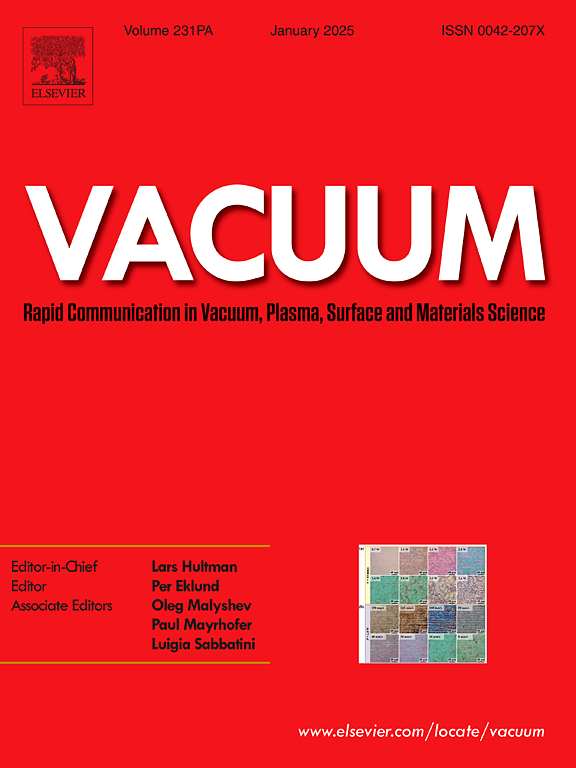PPA氢等离子体流热负荷对钨材料的影响
IF 3.8
2区 材料科学
Q2 MATERIALS SCIENCE, MULTIDISCIPLINARY
引用次数: 0
摘要
脉冲氢等离子体的能量密度为0.22 MJ/m2,低于钨的熔化阈值,与熔化相关的钨材料的相互作用具有重要意义。这种等离子体是在脉冲等离子体加速器中产生的,该加速器是由pcp - ipr开发的,作为聚变相关材料相互作用研究的试验台设施。这种能量密度相对较低的等离子体对W材料的影响表现出不同的表面变化,这取决于射击次数。观察到外部纵向磁场对这些表面修饰的影响。在不同的射击次数下,研究了水疱的外观、~ μm大小的裂纹的形成和扩展,因为它们有助于W粉尘的产生。在等离子体辐照的W表面,杂质再沉积,W粉尘形成W2C层。等离子体撞击使材料产生应变,随着等离子体撞击次数的增加,晶格应变向材料内部渗透得更深。等离子体冲击后拉伸残余应力的积累使W材料容易形成裂纹。用d- sin2本文章由计算机程序翻译,如有差异,请以英文原文为准。
Impact of heat load on tungsten material by hydrogen plasma stream of PPA
Interaction of pulsed hydrogen plasma, with an energy density ∼ 0.22 MJ/m2, that is below the melting threshold of tungsten, on fusion-relevant tungsten material has a significant importance. This plasma is produced in a pulsed plasma accelerator, developed at CPP-IPR as a test-bed facility for fusion-relevant material interaction study. The impact of this relatively low energy density plasma on W material shows different surface modifications depending on the number of shots. The influence of an external longitudinal magnetic field on these surface modifications has been observed. Appearance of blisters, formation and propagation of cracks ∼ μm size are studied under different number of shots as they contribute to W dust generation. Re-deposition of impurity is observed along with W dust forming W2C layer on plasma irradiated W surface. The plasma impact causes strain in the material and the lattice strain penetrates deeper into the material with increase in number of plasma shots. Accumulation of tensile residual stress after plasma impact makes the W material prone to crack formation. This residual stress is estimated using d-sin2ѱ method and has a value ∼ (23.51 ± 2.22) GPa in absence of magnetic field and the stress is relieved with the crack formation on material surface.
求助全文
通过发布文献求助,成功后即可免费获取论文全文。
去求助
来源期刊

Vacuum
工程技术-材料科学:综合
CiteScore
6.80
自引率
17.50%
发文量
0
审稿时长
34 days
期刊介绍:
Vacuum is an international rapid publications journal with a focus on short communication. All papers are peer-reviewed, with the review process for short communication geared towards very fast turnaround times. The journal also published full research papers, thematic issues and selected papers from leading conferences.
A report in Vacuum should represent a major advance in an area that involves a controlled environment at pressures of one atmosphere or below.
The scope of the journal includes:
1. Vacuum; original developments in vacuum pumping and instrumentation, vacuum measurement, vacuum gas dynamics, gas-surface interactions, surface treatment for UHV applications and low outgassing, vacuum melting, sintering, and vacuum metrology. Technology and solutions for large-scale facilities (e.g., particle accelerators and fusion devices). New instrumentation ( e.g., detectors and electron microscopes).
2. Plasma science; advances in PVD, CVD, plasma-assisted CVD, ion sources, deposition processes and analysis.
3. Surface science; surface engineering, surface chemistry, surface analysis, crystal growth, ion-surface interactions and etching, nanometer-scale processing, surface modification.
4. Materials science; novel functional or structural materials. Metals, ceramics, and polymers. Experiments, simulations, and modelling for understanding structure-property relationships. Thin films and coatings. Nanostructures and ion implantation.
 求助内容:
求助内容: 应助结果提醒方式:
应助结果提醒方式:


